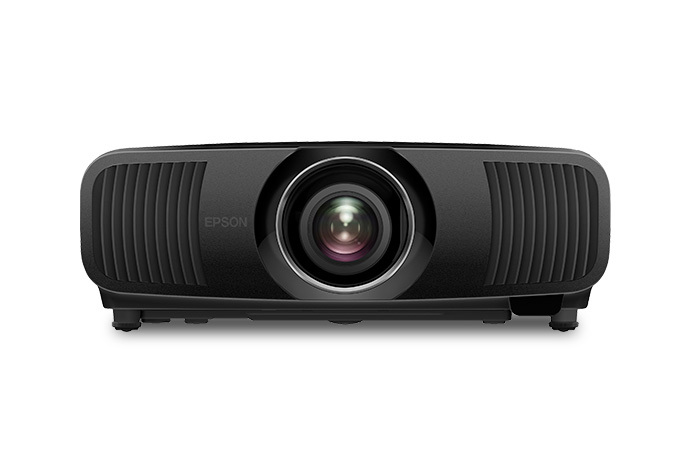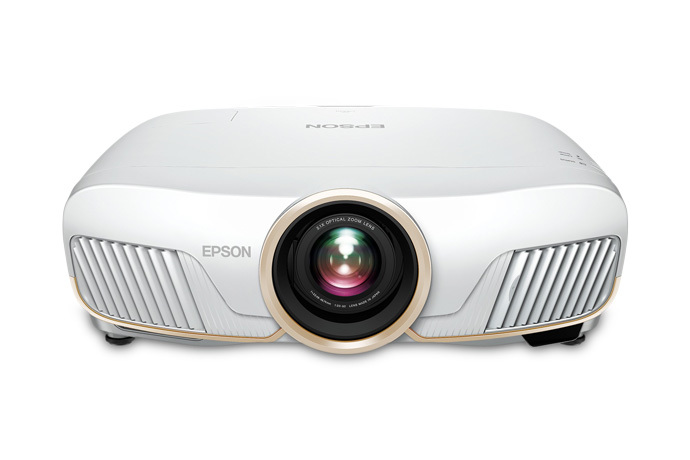There are plenty of projectors available in the market. And Epson makes some of the best ones. But knowing which one is right for you can be tough.
Confused between LS12000 vs 5050UB?
The LS12000 offers a higher resolution, color brightness, contrast ratio, and longer lamp life. It has a laser light source, lower input lag, and is available through authorized Epson dealers. However, it lacks UltraBlack technology, pixel-shift processing, and 3D mode.
On the other hand, the 5050UB has a slightly higher image brightness, and UltraBlack technology. Additionally it has pixel-shift processor for 4K support, Full HD 3D mode, and wider availability. It uses a bulb light source, has a slightly higher input lag, and a shorter lamp life.
This is just a small version of how the two projectors compare. Find out more details right in this article.
General Overview
There are a bunch of good projectors that create confusion, such as the 4050 vs 5050. But here let’s look at LS12000 vs 5050UB specs
| Aspects | LS12000 | 5050UB |
| Resolution | 3840 x 2160 | 1920 x 1080 |
| Image brightness | 2,500 ANSI | 2,600 ANSI |
| Color brightness | 2,700 Lumens | 2,600 Lumens |
| Contrast Ratio | 1,200,000:1 | 1,000,000:1 |
| HDR support | Yes | Yes |
| Light source | Laser light source | Bulb |
| Lamp type | Laser Phosphor | 250W UHE bulb |
| UltraBlack technology | No | Present |
| Pixel-shift processor | No but can produce sharper images without it | Present to support 4K |
| Input lag | 20-39ms | 22.5-28ms |
| 3D mode | None | Full HD 3D |
| Audible Noise | 30 dB / 22 dB (Eco) | 31 dB / 20 dB (Eco) |
| Availability | Only through authorized Epson dealers | Widely available |
| Lamp Life | 20,000 hours | 3,500 hours (5,000 hours in Eco Mode) |
| Price | Check Latest Price | Check Latest Price |
ls12000 vs 5050ub: In Depth Comparison
Let’s see the details of both ls12000 vs 5050ub as follows.
Resolution:
The projectors have different resolutions but have the same aspect ratio of 16:9.
The LS12000 stands out with its native resolution of 3840 x 2160, commonly referred to as 4K resolution. This means it can display incredibly sharp and detailed images with a high level of visual clarity.
On the other hand, the 5050UB offers a resolution of 1920 x 1080, which is considered Full HD. While still providing a good level of detail, it falls short compared to the LS12000’s 4K resolution.
The different resolutions affect the video modes as well. The 5050UB has 720p, 1080i, 1080p/60, 1080p/24, 1080p/30, 1080p/50, 2160p/60, 576i, 576p, 480p, 480i.
The higher resolution LS12000, on the other hand, has 720p, 1080i, 1080p/60, 576i, 576p, 480p, 480i.
Image brightness:
The LS12000 offers a brightness rating of 2500 ANSI lumens, providing ample brightness for most environments.
The 5050UB, with a slightly higher brightness of 2600 ANSI lumens, has a minor advantage in terms of brightness. This can be particularly useful in well-lit rooms or when dealing with ambient light. Both are bright enough to be used on popcorn ceilings.
Color brightness:
The LS12000 delivers a color brightness of 2700 lumens, allowing it to produce rich and vivid colors. The 5050UB, with its color brightness of 2600 lumens, also performs well in this regard. But the LS12000 offers a slight edge in terms of color vibrancy and accuracy compared to 5050UB.
Contrast Ratio:
The contrast ratio determines the range between the darkest and brightest parts of an image.
So What is the dynamic contrast of LS12000?
The LS12000 boasts an impressive contrast ratio of 1,200,000:1. This translates to deep blacks and bright whites, resulting in a more dynamic and realistic visual experience.
The 5050UB, with its contrast ratio of 1,000,000:1, also delivers excellent contrast performance. But it is slightly lower than the LS12000.
HDR support:
Both the LS12000 and 5050UB support HDR (High Dynamic Range). It is a technology that enhances the visual experience by expanding the color range and improving contrast.
While both projectors offer HDR support, the LS12000 stands out. It is because of its wider color gamut, ensuring more accurate and lifelike HDR reproduction.
Light source:
The LS12000 utilizes a laser light source, which offers several advantages over traditional bulbs. Laser light sources provide higher brightness output, ensuring vivid and impactful images even in well-lit environments.
Additionally, lasers are more durable and have a longer lifespan compared to bulbs. This makes the LS12000 a more reliable and cost-effective choice in the long run.
In contrast, the 5050UB uses a 250W UHE (Ultra High Efficiency) bulb as its light source. The UHE lamp is known for its ultra-high efficiency and is designed to provide a bright and clear image.
There is also no projector light bleeding from either projector.
Lamp type:
The LS12000 utilizes a long-lasting laser phosphor lamp, offering higher brightness and a lifespan. The 5050UB uses a 250W UHE bulb, providing a standard lamp option.

Laser phosphor provides higher brightness output compared to bulbs, resulting in vibrant and impactful images even in well-lit environments.
UltraBlack technology:
While the LS12000 lacks UltraBlack technology, the 5050UB incorporates this feature. UltraBlack technology enhances contrast performance by reducing light leakage and improving black levels.

As a result, the 5050UB can achieve deeper blacks and a more pronounced sense of depth in darker scenes. This enhances overall image quality and cinematic experience.
Pixel-shift processor:
Although the LS12000 does not have a dedicated pixel-shift processor, it’s still capable of producing sharp and detailed images.
However, the LS12000 utilizes other techniques to enhance image sharpness and detail. This delivers impressive visual results without the need for a higher resolution or pixel-shift technology.
On the other hand, the 5050UB incorporates a pixel-shift processor specifically designed to support 4K content. This ensures enhanced sharpness and detail. But it is not as good as true 4K.
Input lag:
Input lag refers to the delay between a command or action and its corresponding response on the screen. Both the LS12000 and 5050UB offer low input lag, making them suitable for gaming and fast-paced content.
So What is the input lag of LS12000?
The LS12000 boasts an input lag ranging from 20 to 39 milliseconds. While the 5050UB provides an input lag between 22.5 and 28 milliseconds.
Both projectors offer responsive performance, with the LS12000 having a slight advantage in terms of lower input lag.
3D Mode:
While the LS12000 does not support 3D mode, the 5050UB is capable of displaying Full HD 3D content.
Audible Noise:
In terms of audible noise, both projectors operate at relatively quiet levels. The LS12000 produces 30 dB of noise in normal mode and 22 dB in Eco mode. This ensures a peaceful viewing experience.
Similarly, the 5050UB generates 31 dB of noise in normal mode and 20 dB in Eco mode. While there is a slight difference in noise levels, both projectors maintain low noise levels. Particularly in Eco mode.
Lamp Life:
The LS12000 excels in terms of lamp life, thanks to its laser phosphor light source. it provides an impressive lamp life of 20,000 hours. This means that the LS12000 requires less frequent lamp replacements, resulting in reduced maintenance costs and a longer-lasting projector.
In comparison, the 5050UB relies on a 250W UHE bulb. It has a lamp life of 3,500 hours (or 5,000 hours in Eco Mode).
The LS12000’s significantly longer lamp life offers greater convenience and cost-effectiveness for long-term projector usage.
Price:
LS12000 And 5050UB are both very popular and rated as amazon’s choice. But the LS12000 is the much more premium option costing $4999. The 5050Ub is much more bang for the buck with a price tag of $2999.
LS12000 vs 5050UB: Final Verdict
The LS12000 and 5050UB have several distinguishing features and specifications that might make you sway either way. Overall the LS12000 is the better projector with better image quality, light, longevity. But the 5050UB is a great choice for budget shoppers and has a 3D mode.
So if you have the budget and want the best image quality, then go for the the LS12000. But if you are on a shorter budget, then the 5050UB will surely deliver.
Frequently Asked Questions (FAQs):
What is static vs dynamic screen contrast?
Static contrast ratio measures the simultaneous brightness range of a display. While dynamic contrast ratio measures the brightness range over time. Dynamic contrast can be manipulated by adjusting brightness in response to content.
What is the best contrast for screen?
A contrast level between 60-70% is considered the best for normal lighting conditions. But the best contrast for a screen depends on the type of content that you will be viewing.
Does dynamic contrast increase input lag?
Dynamic contrast can increase input lag. This is because dynamic contrast can cause the display to dim and brighten rapidly. Dynamic range is indeed another step added to delivering an image. This can introduce a small amount of lag.
Conclusion
And that concludes our discussion on LS12000 vs 5050UB. You cannot go wrong with getting either of them. But be sure you get the projector that meets your requirements and fulfills your needs.
Good luck!
